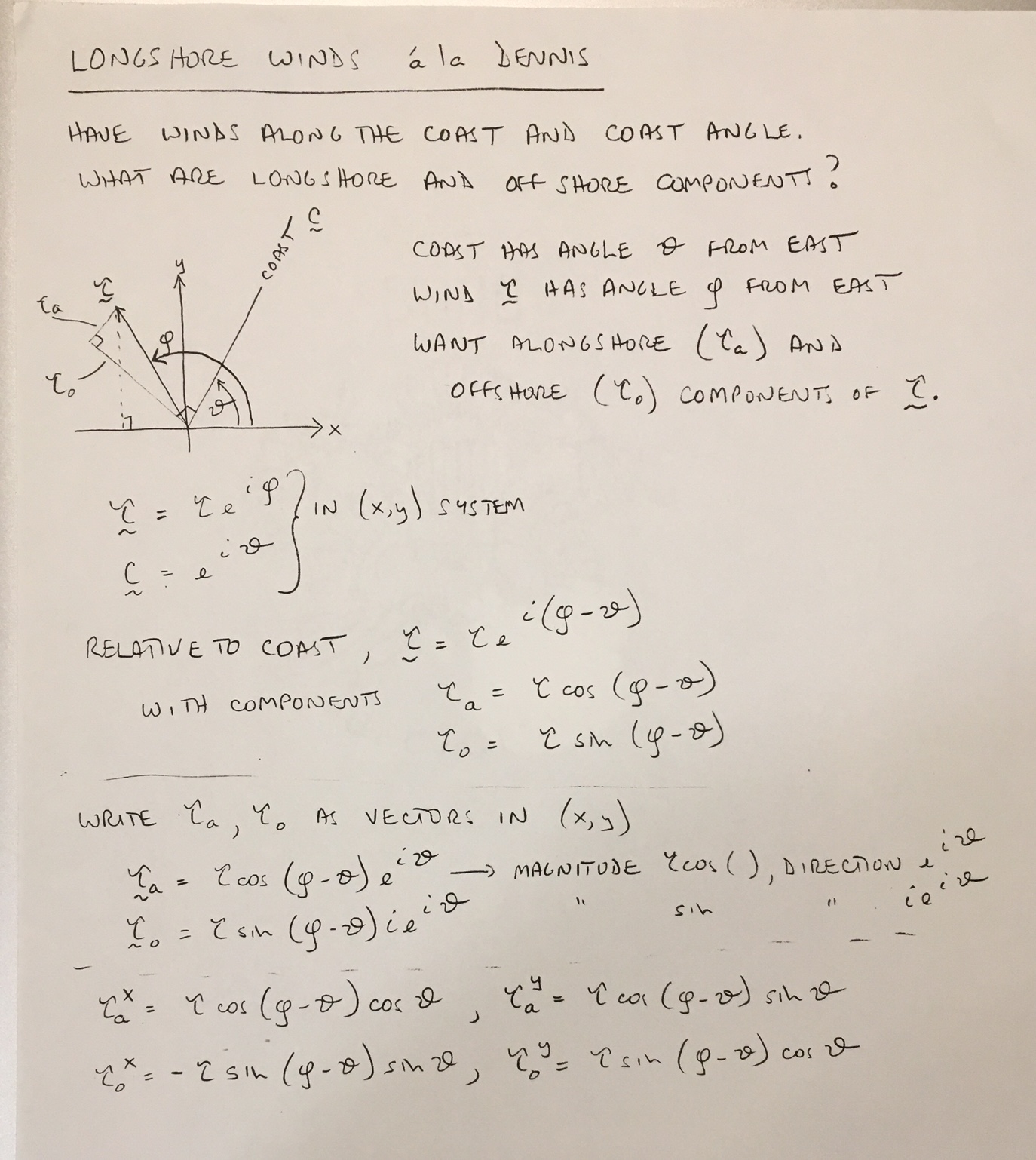The trickiest part of a calculation like this is deciding what you mean by "coast": Is it the wind at the beach? Or 25, 50, 100km offshore?
That has implications for how complicated your "coastline" is, but more importantly the wind is almost always stronger further offshore, so the result depends very much on this choice. This is further complicated by how the wind product was calculated and how that processing treated the nearshore region.
The scale of coast you choose will therefore have large implications for the result.
Billy K
On Jun 27, 2018, at 12:38 AM, vivek shilimkar <vivek.shilimkar@xxxxxxxxx> wrote:
Dear All,
I want to calculate the along-shore and cross-shore components of wind-stress.
I found following old tread, in which Dr. Ryo Furue have answered the same question.
https://www.pmel.noaa.gov/maillists/tmap/ferret_users/fu_2013/msg00345.html
However, I don't understand it well, what is actually happening in the calculations explained in the above method.
I would really appreciate if anyone could explain me the method in above answer or share a new method to calculate along-shore and cross-shore components of wind stress.
Thank you in advance!
Vivek
